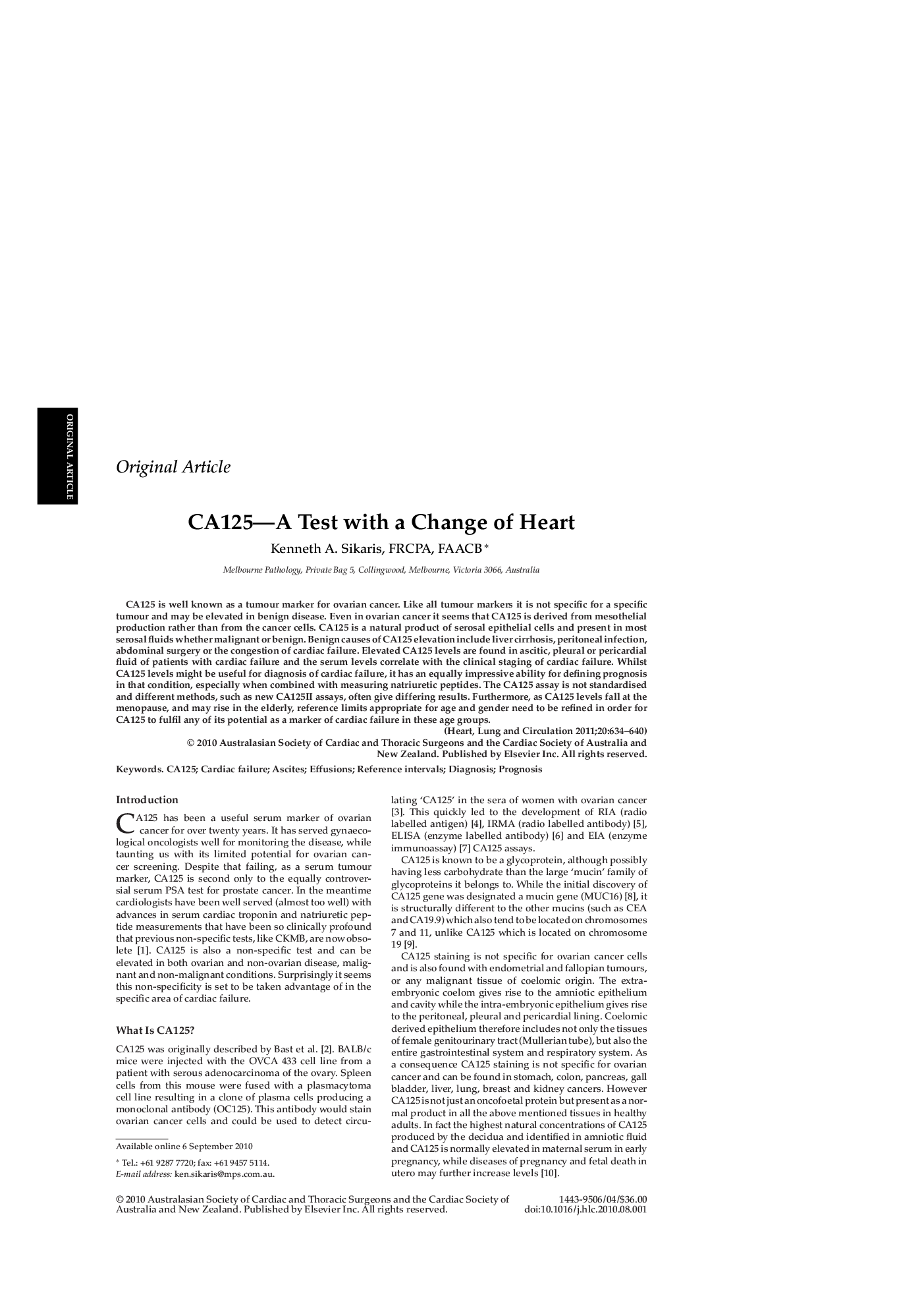| Article ID | Journal | Published Year | Pages | File Type |
|---|---|---|---|---|
| 2919271 | Heart, Lung and Circulation | 2011 | 7 Pages |
CA125 is well known as a tumour marker for ovarian cancer. Like all tumour markers it is not specific for a specific tumour and may be elevated in benign disease. Even in ovarian cancer it seems that CA125 is derived from mesothelial production rather than from the cancer cells. CA125 is a natural product of serosal epithelial cells and present in most serosal fluids whether malignant or benign. Benign causes of CA125 elevation include liver cirrhosis, peritoneal infection, abdominal surgery or the congestion of cardiac failure. Elevated CA125 levels are found in ascitic, pleural or pericardial fluid of patients with cardiac failure and the serum levels correlate with the clinical staging of cardiac failure. Whilst CA125 levels might be useful for diagnosis of cardiac failure, it has an equally impressive ability for defining prognosis in that condition, especially when combined with measuring natriuretic peptides. The CA125 assay is not standardised and different methods, such as new CA125II assays, often give differing results. Furthermore, as CA125 levels fall at the menopause, and may rise in the elderly, reference limits appropriate for age and gender need to be refined in order for CA125 to fulfil any of its potential as a marker of cardiac failure in these age groups.
